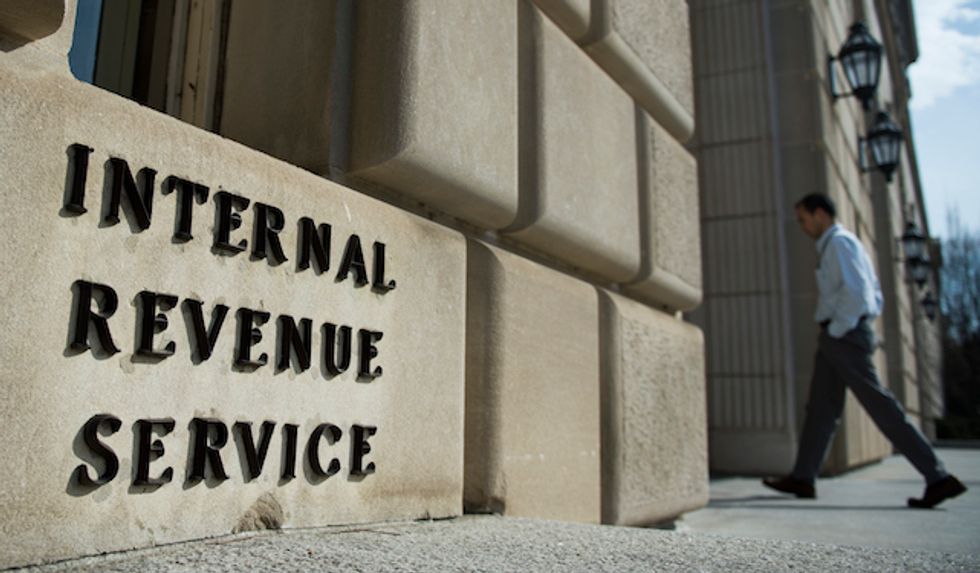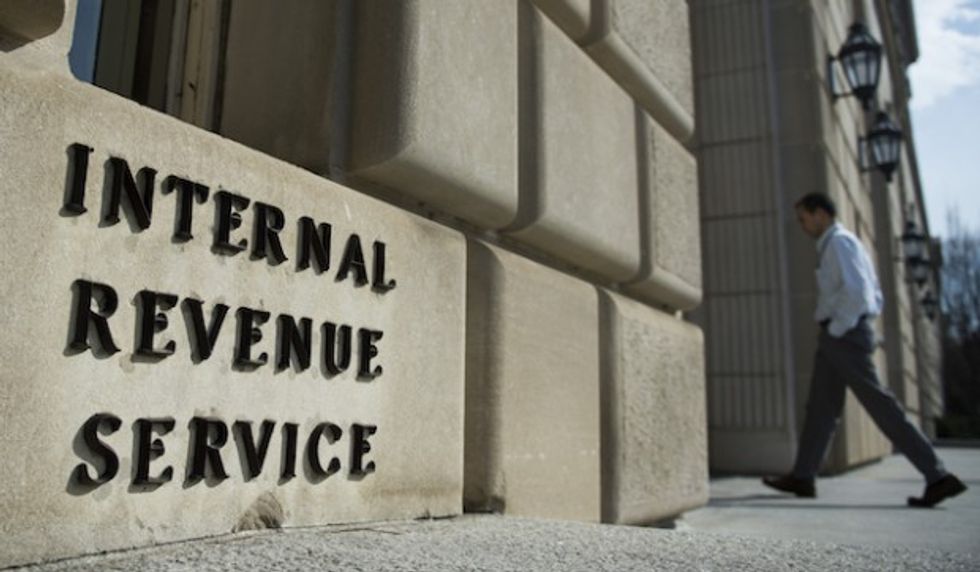
© 2024 Blaze Media LLC. All rights reserved.
Many memes and politicians, such as Bernie Sanders, have been enthusiastically bringing up that the United States used to have a 90 percent tax rate. This is true, but once you dig a little deeper, you quickly find that it doesn't actually mean much.
You’ve probably seen a meme or two or - well, an inordinately large sum - noting that back in the good old days of the 1950’s, the United States had a 90 percent tax rate and yet the economy grew, unemployment was low and all was right in the world. OK, with the exception of Jim Crow, the Soviet Union and a bunch of other things, but you get the point. Democartic presidential candidate Sen. Bernie Sanders, as well as a whole host of other famous left-wingers, has pointed out the old 90 percent tax rate multiple times.
And they are completely right.
And it is all but completely irrelevant.
While it is true that the United States had a 90 percent top marginal tax rate, the first thing to point out is that this was a top marginal tax rate. So, for example, if you make $30,000 a year and there’s a 20 percent marginal tax that kicks in on income above $25,000, you only pay 20 percent on the $5,000 of income above that threshold. So in this example you would pay $1,000. Your marginal tax rate may be 25 percent, but your effective tax rate is only 3.3 percent.
Today, the top marginal tax rate is 39.6 percent and it kicks in at $466,951 for a married couple filing jointly.
Back in 1955, the top marginal tax rate was 91 percent, but it didn’t come in until a wage earner earned what amounted to $3,426,776 (in inflation-adjusted dollars) when filing jointly. To put this in perspective, to be in the top one percent of wage earners between 2010 and 2014, one needed to make $380,354 per year.
It should also be mentioned that corporate tax rates have never been as high as 90 percent, or even close. So, as Alan Reynolds points out, when the individual income tax was reduced, it “induced thousands of businesses to switch from filing under the corporate tax system to filing under the individual tax system.”
It is the height of simplicity to compare tax rates (particularly only the top rate) from year to year without adjusting for the myriad of other changes that have been made to the code. And there have been a lot. Our mammoth federal tax code clocks in at 74,608 pages. It didn’t get that way all at once some time during the Truman administration.
To illustrate just how many changes there have been, note that in 1955 there were 24 tax brackets. In 1988 there were two and today there are seven.
The biggest change to the code was in 1986 when the entire code was all but rewritten with the Tax Reform Act of 1986. Yes, the top marginal tax rate was reduced, but a whole host of deductions and loop holes were eliminated as well.
One of the largest eliminated deductions was on real estate. Every piece of real property (the building, not the land) is considered by the IRS to lose all of its value over the course of 27 and a half years. So, for example, if a building is purchased for $275,000 (leaving aside the land value for simplicity), each year the IRS would reduce the value by $10,000.
Before 1986, this was considered a loss that any individual could count against his or her income. If someone made $50,000 in income and had $10,000 in real estate depreciation “losses,” that person would only have to pay income tax on $40,000. After 1986, only cash flow from the real estate itself could be written off by depreciation and people could no longer count such “losses” against their own personal income.
Given all this, it is not surprising that as a percentage of GDP, the government has received roughly the same amount from federal taxes every single year since 1950, regardless of what the tax rates were. This is something called Hauser’s Law, which, while probably not set in stone, does provide a good history of what has happened and how relevant that 90 percent tax rate was.
For every year between 1952 and 2014, the government has brought in between 17 and 20 percent of GDP in tax revenue and between 7 and 9 percent of GDP in income tax revenue. Furthermore, since at least 1980, the percentage paid by the top 20 percent has gone up. In 1980, the top 20 percent paid 55 percent of all income taxes. In 2013, they paid closer to 70 percent. It appears pretty obvious that, while yes, there was a 90 percent tax rate on the books, no one actually paid it.
Regardless of what you think the tax rate should be, it doesn’t help anyone to pull up bogus, out-of-context statistics to make your case. Well, unless you are running for elected office, that is.
–
TheBlaze contributor channel supports an open discourse on a range of views. The opinions expressed in this channel are solely those of each individual author.
Want to leave a tip?
We answer to you. Help keep our content free of advertisers and big tech censorship by leaving a tip today.
Want to join the conversation?
Already a subscriber?
more stories
Sign up for the Blaze newsletter
By signing up, you agree to our Privacy Policy and Terms of Use, and agree to receive content that may sometimes include advertisements. You may opt out at any time.
© 2024 Blaze Media LLC. All rights reserved.
Get the stories that matter most delivered directly to your inbox.
By signing up, you agree to our Privacy Policy and Terms of Use, and agree to receive content that may sometimes include advertisements. You may opt out at any time.



